I haven't settled on what I'll call these plants: western salsify or western goat's beard? I don't get the connection to the name "goat's beard". I do understand how people who told me these plants were milkweeds got confused.
Also called goat's beard, due to the shape of the hair-like bristles at the top of each achene (one seeded fruit).Oh. Okay...
There is yellow salsify (yellow goat's beard), and I notice some web sites confuse the two, but I believe the yellow salsify is slightly different from the western variety. According to the Illinois wildflowers web site,
Western Goat's Beard appears to prefer drier habitats than Goat's Beards. These two species have a very similar appearance and can be difficult to tell apart. However, Yellow Goat's Beard has floral bracts that are shorter and fewer in number (there are about 8 bracts that extend to the outer margin of the ray florets, but usually not beyond), and its foliage tends to be less pale than the foliage of Western Goat's Beard.While some web sites lump all plants with salsify in their name together as the same, I guess my weeds are not meadow salsify.
Western salsify and meadow salsify appear similar except western salsify has hollow stems that are inflated below the flower head while meadow salsify has solid stems that are not inflated below the flower but rather uniformly tapered. Meadow salsify leaf tips are usually curled or curved and the edges of its phyllaries are purplish.Some web sites says this is a biennial, but from my experience I have my doubts. I have seen plants grow from nothing and go all the way to producing seeds in one season, sometimes in a matter of a day if it is July and it is time for the seeds to be spread. I have never seen one of my salsify plants that does not produce flowers and goes to seed the same year it comes above the ground.
Another web site says it can be a "short-lived perennial". That doesn't sound right either as perennial means: "a plant lasting for three seasons or more." Once "my" plant's seeds are dispersed the plant dies. Doesn't "short lived" and "perennial" sound like an oxymoron?
Also,
The blooming period occurs from late spring to mid-summer and lasts about 1‚–1½ months. The flowerheads open during the early morning, but become closed by the afternoon.I have found the flowers here start closing around 10:30 am and only a few are left open by noon. When picking these plants I could tell time by the flower's closing. As I rarely get up early I am not sure how long after sunrise the flowers open. The one time I was up at sunrise I noticed the flowers didn't open till a half hour or so after the sun appeared.
If we had several overcast, or rainy, days in a row I found the flowers would stay open till 2 pm or even 3 pm. Apparently the flowers need a certain amount of sunlight before finally closing to convert to a seed ball. By July one day of sunlight is all some flowers require before closing for their conversion.
I have found the plants here mainly grow from the last week of May to mid-July. June is the time most grow, although I have seen isolated plants pop up as late as September. Even if the flower has turned to seed, the bud will remain closed until the right time which is usually the first to second week of July. A combination of daylight and temperature (hot) must trigger the plant's opening of the seed ball to allow the breeze to scatter the seeds.
As I mentioned plants remain closed until July even if the flower has already converted to seeds - but early plants will use this time to form more stalks with flowers and seeds. The closer it is time to open the seeds the faster the young plants will grow. New plants that grow when the seeds are being scattered in July can grow from barely visible above ground to scattering seeds in two days. One day to grow and flower, the other day for the flower to convert and then open as seeds. These later plants will consist of a single stalk.
I counted 64 seeds in one ball of seeds. As all they open around the same time, propagation to the next generation is done en mass. 64 seeds if only one flower, 64 multiplied by numerous stalks on one plant ensures at least one seed will make it for another generation.
The stem is hollow and filled with a milky white latex sap that is sticky. The plants grow so fast they leak this latex sap from the plant's joints. When picking many plants I would get a layer of this latex on my hands that took some effort to scrub off. Even the tap root has this sap.
"The milky stem latex has been chewed as gum in the past."Yuck! This latex sap tastes bitter!
The salsify plant senses the height of the surrounding grass and will grow accordingly to be a little higher. I believe the height is to better catch a breeze and be able to disperse the seeds a distance from the plant. I found plants several inches tall to three feet tall. Naturally the late plants in July that must go from "zero to 60" to disperse their seed along with the other plants sometimes can't grow higher than the surrounding grass. The early plants grow well higher than the surrounding grass to enable the plant to remain taller while it stops growing in height to flower and convert to seed.
The plant has a large long taproot. One must get all of the root when pulling the plant from the ground else the plant will regrow. Only after the seed ball has opened and the seeds have dispersed will the plant die, never to grow again.
If the plant has flowered pulling the plant will not stop the flower from converting into a seed ball. One must pull/cut the flower from the stalk. The more stalk attached to the flower the greater the probability of seed conversion. By the end of June even this is not enough to stop the conversion. Then I place all the flowers I have removed from the plant into a bag for the garbage. Even then the flower will convert into seeds, though the seed ball that results is not so robust.
The seeds are extemely light and their "parachute" shape ensure the slightest brreze will carry them away. That is, once the first few seeds have left the seed ball reducing the ball's integrity. I assume that is so the seeds will disperse over a wider area due to a stronger breeze neccessary to "break" the seed ball. Still I have found a pile of seeds around many plants as the breeze here is often variable. That is, a gust may break the ball but then little breeze thereafter.
Once the seed touches grass the parachute collapses so the seed may fall through the grass and reach the ground. Once that happens it is very hard to see the seed.
I have been picking these weeds for four years now, and while I have gathered 98% of the seeds each year, each year I have just as many plants that grow. Last year I sprayed the plants to eliminate the plants where I didn't get 100% of the root when pulling the plant. The herbicide I used killed the plant. I have found a number of plants growing again this summer. As it is isn't mid-June yet I am not sure how many plants there are this year so I can't determine if spraying made any difference. While I have even picked some of my neighbor's western salsify plants, I realize some of my plants are due to their seeds drifting onto my property. Still the concentrations of plants in certain areas make me wonder how long old seeds remain in the soil before germinating.
"this plant is usually avoided by livestock and other mammalian herbivores."I have found this not to be true if the plant has flowers. Once it turns to seed the livestock will avoid the plant. But cattle - and I found deer - do like the flowers and will eat the plant halfway to the ground. Even so, when I have tasted the milky sap I found it to be very bitter.
Here are some photos, credited when I knew the source:
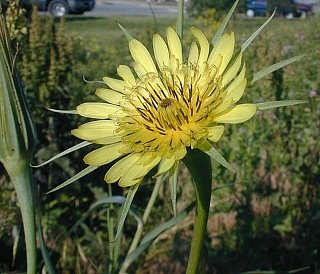
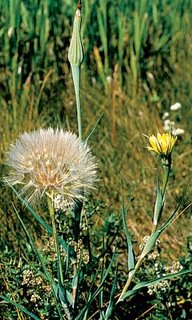
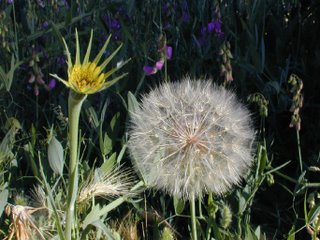
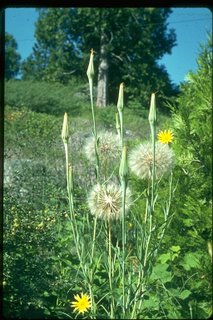
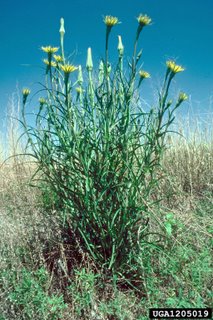
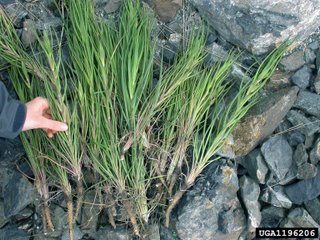
by Dave Powell and Michael Shephard, USDA Forest Service, www.forestryimages.org
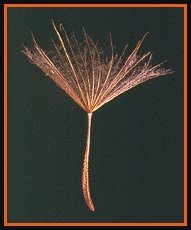

This link is to three pretty photos by Carol Davis.
And last, some photograhers can even make these seed balls look pretty..

by amulon

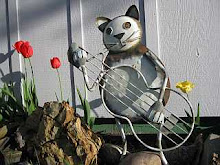
No comments:
Post a Comment